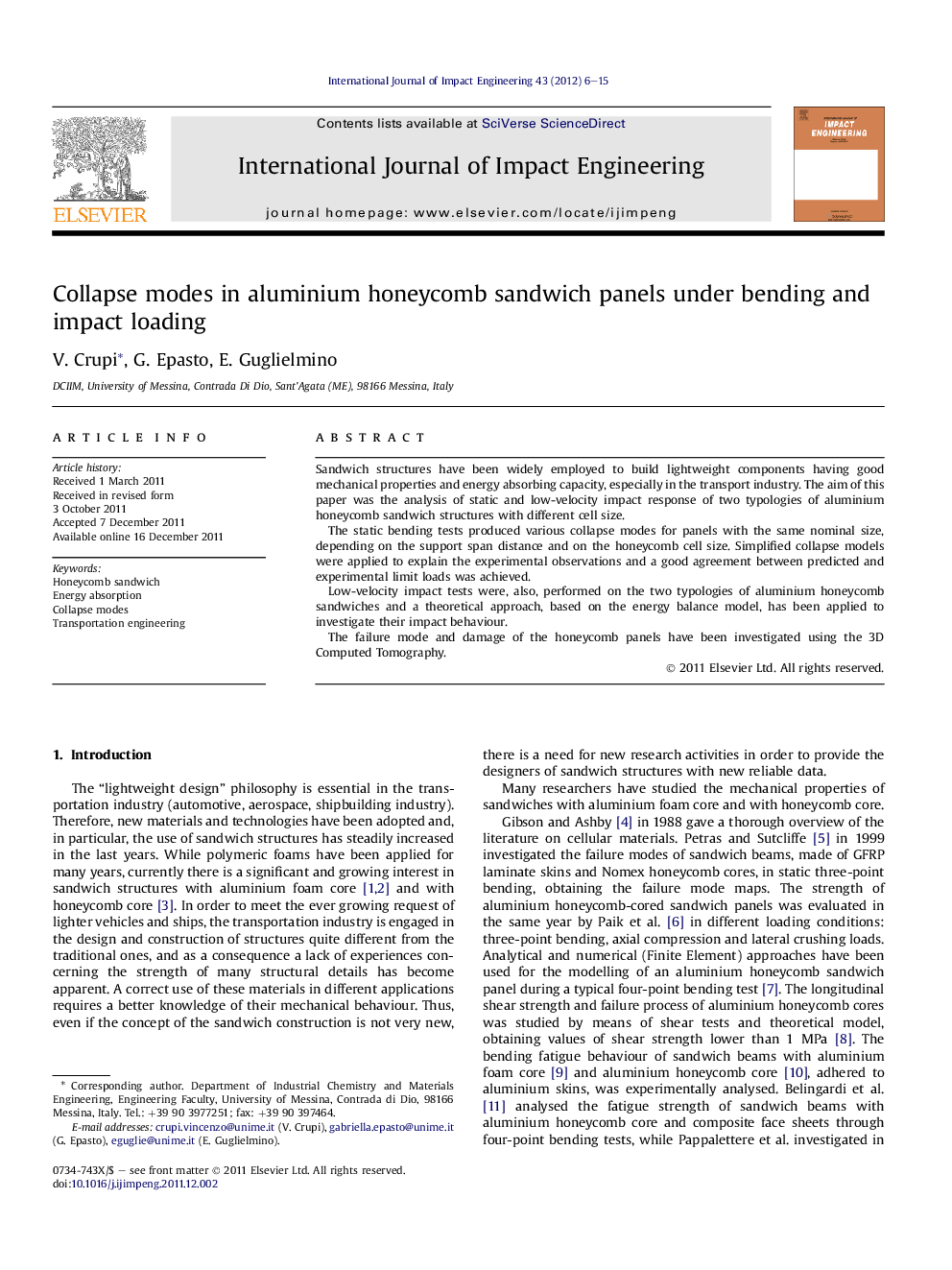| Article ID | Journal | Published Year | Pages | File Type |
|---|---|---|---|---|
| 778463 | International Journal of Impact Engineering | 2012 | 10 Pages |
Sandwich structures have been widely employed to build lightweight components having good mechanical properties and energy absorbing capacity, especially in the transport industry. The aim of this paper was the analysis of static and low-velocity impact response of two typologies of aluminium honeycomb sandwich structures with different cell size.The static bending tests produced various collapse modes for panels with the same nominal size, depending on the support span distance and on the honeycomb cell size. Simplified collapse models were applied to explain the experimental observations and a good agreement between predicted and experimental limit loads was achieved.Low-velocity impact tests were, also, performed on the two typologies of aluminium honeycomb sandwiches and a theoretical approach, based on the energy balance model, has been applied to investigate their impact behaviour.The failure mode and damage of the honeycomb panels have been investigated using the 3D Computed Tomography.
► Static and low-velocity impact response of aluminium honeycomb sandwiches. ► Theoretical models were applied to explain the collapse modes of the bending tests. ► Application of energy balance model and tomographic analyses to the impact tests.
